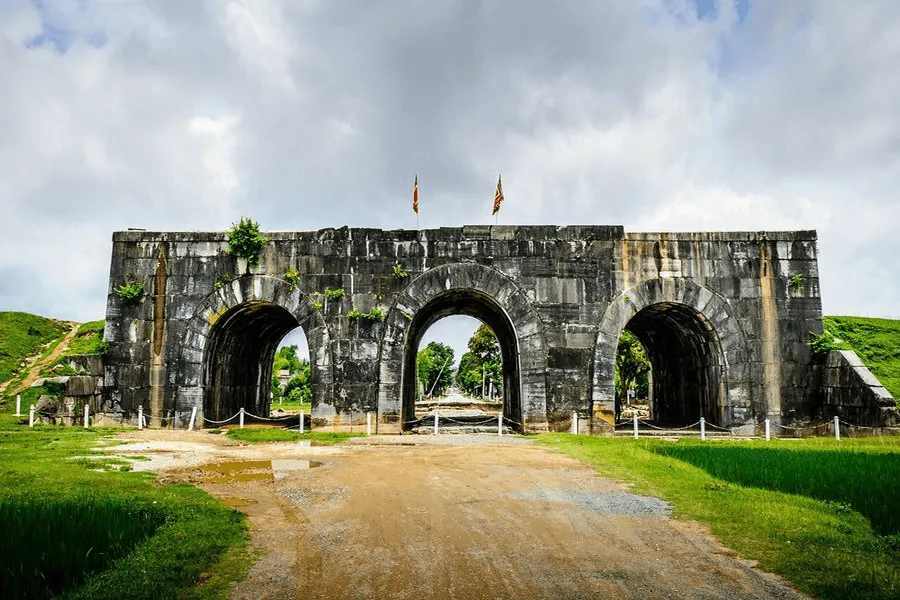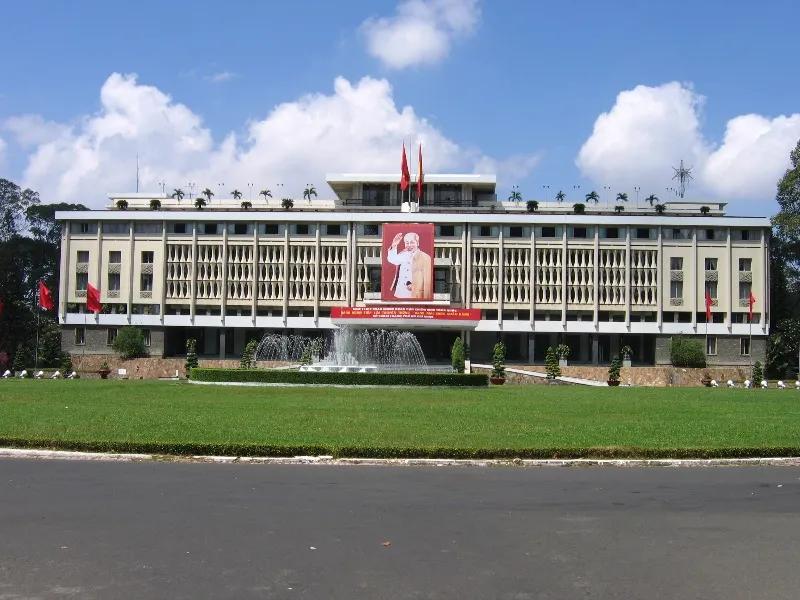Vietnam, a beautiful S-shaped country bordered by the East Sea, is not only known for its stunning natural landscapes but also serves as a living museum, preserving the heroic history of its people. From ancient capitals and legendary battlefields to sacred cultural landmarks, every site tells a story of perseverance and triumph in the nation’s struggle to build and defend itself. Visiting these places allows us to admire unique architectural masterpieces and relive glorious historical moments, stirring pride and love for the homeland.
Hue Imperial Citadel – Witness of the Nguyen Dynasty’s History
The Hue Imperial Citadel, a UNESCO-recognized world cultural heritage site, is one of the most famous historical sites in Vietnam. Serving as the capital of the Nguyen Dynasty, Vietnam’s last feudal dynasty, the Hue complex consists of the Imperial City, Forbidden Purple City, royal tombs, and other architectural marvels. In Hue, visitors can admire the ancient courtly architecture, learn about the lavish lifestyles of emperors and nobles, and feel the grandeur of a bygone era.
Cu Chi Tunnels – Symbol of Resilient Spirit
The Cu Chi Tunnels, an extraordinary military wonder, is a renowned historical landmark in southern Vietnam. Spanning more than 155 miles, this tunnel network was constructed by Cu Chi residents during the resistance against American forces. It served as a shelter, living quarters, and military base for the liberation army. Exploring the Cu Chi Tunnels offers a glimpse into life underground, complete with hidden chambers, medical facilities, Hoang Cam kitchens, and secret combat rooms. These tunnels symbolize the unwavering resilience and courage of the Vietnamese people in their struggle for independence and freedom.
Ho Citadel – A Unique Stone Architectural Marvel
Ho Citadel, located in Thanh Hoa Province, is a significant historical site in Vietnam dating back to the Ho Dynasty in the 14th century. Constructed entirely from large stone blocks, its architectural design reflects high achievements in construction techniques and artistry during ancient times. As one of the few remaining ancient citadels in Vietnam, Ho Citadel was recognized as a UNESCO World Cultural Heritage Site in 2011, attracting visitors for both exploration and study.

Hung Kings Temple – The Cradle of Vietnam’s Origin
Hung Kings Temple Historical Site, located in Phu Tho Province, is dedicated to the Hung Kings, who founded Văn Lang—the first state in Vietnamese history. This sacred Vietnamese cultural site embodies profound national heritage. Every year, on Hung Kings Commemoration Day (10th day of the third lunar month), millions of people travel from across the country to pay their respects to the ancestors. The Hung Kings Temple represents unity, pride, and the Vietnamese tradition of gratitude and remembrance.
Hoi An Ancient Town – Fusion of East and West Cultures
Hoi An Ancient Town, once a bustling trading port in the 16th–17th centuries, is one of the best-known historic destinations in Vietnam. The town preserves its unique old-world charm through cobblestone streets, moss-covered rooftops, and traditional assembly halls reflecting influences from Chinese, Japanese, and Western merchants. Hoi An is a testament to the harmonious integration of Eastern and Western cultures, offering visitors a captivating and distinctive experience.
Temple of Literature – Vietnam’s First University
The Temple of Literature, also known as Vietnam’s first university, was constructed in 1070 during the Ly Dynasty. Dedicated to Confucius and other revered scholars, this site hosted prestigious imperial exams for centuries. As a major historical landmark, the Temple of Literature symbolizes the nation’s dedication to education and intellectual development. Today, students and tourists flock to the temple, hoping for academic blessings and good fortune.
Independence Palace – A Testament to Vietnam’s Unification
The Independence Palace in Ho Chi Minh City stands as one of Vietnam’s key historical destinations, tied to the nation’s victory in the resistance against American forces. It witnessed pivotal moments, including April 30, 1975, when the fall of Saigon marked the liberation of southern Vietnam and the nation’s reunification. The Independence Palace symbolizes triumph, peace, and the unity of the Vietnamese people.

Quang Tri Citadel – Valor and Sacrifice
Quang Tri Citadel was the backdrop for the fierce 81-day summer battle of 1972, one of the most tragic yet heroic chapters of Vietnam’s resistance against America. The site is a national symbol of bravery, sacrifice, and the indomitable fighting spirit of the Vietnamese soldiers and civilians. Visitors can hear compelling stories about those who fought and died to protect the citadel, securing the nation’s freedom and independence.
Revolutionary Base D – Relentless Fight for Freedom
Located in Dong Nai Province, Base D was an essential revolutionary headquarters during both the anti-French and anti-American wars. It housed military operations and political activities, embodying the relentless spirit of Vietnam’s southern forces. Base D remains an iconic historical site, where visitors can explore and learn about the daily life and operations of liberation soldiers during wartime.
These famous historical sites in Vietnam are not only fascinating destinations but also living records that deepen our understanding of the nation’s proud history. Visit them, and let Vietnam’s heroic past forever resonate in your heart.